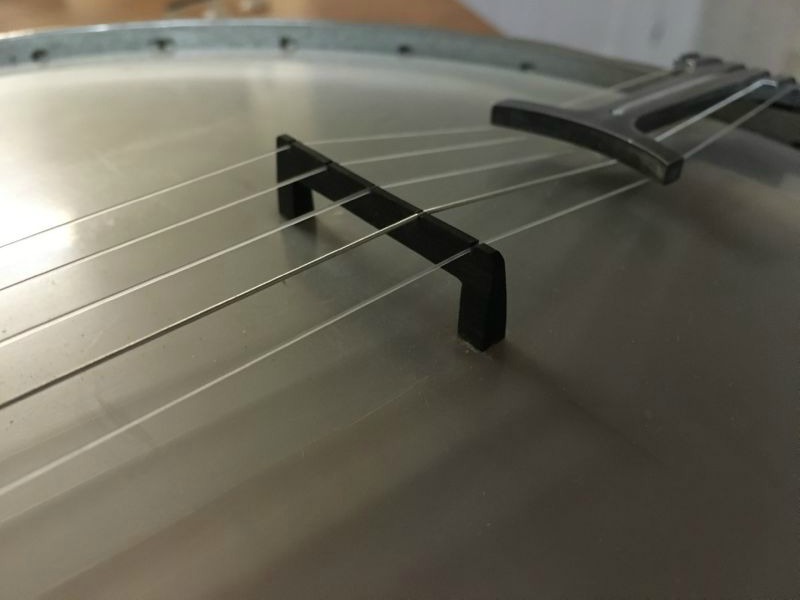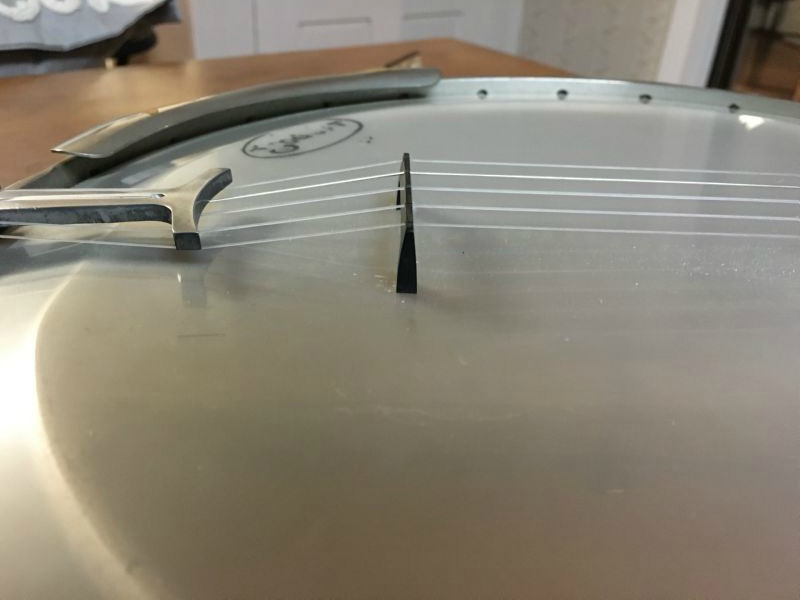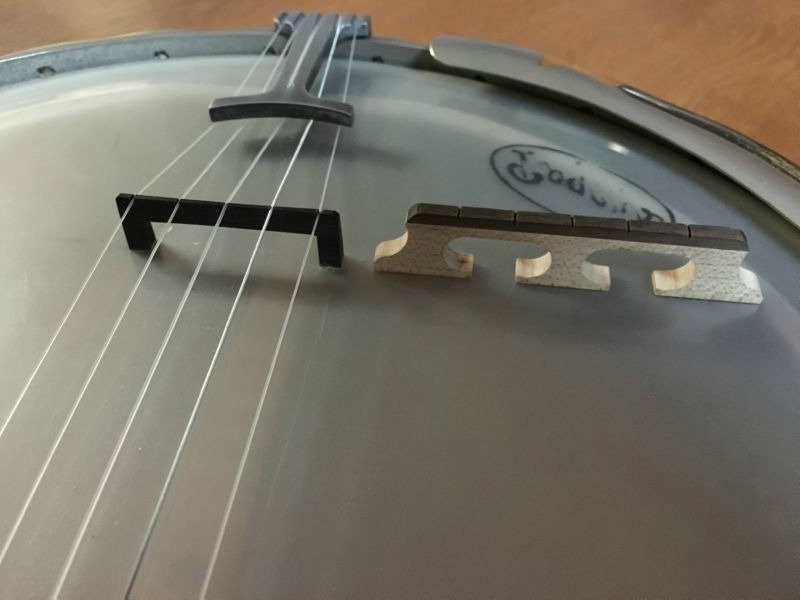Classic-Banjo
A Site Dedicated to all enthusiasts of Classic Style Banjo
Ladbroke March (Classic Banjo)
By C. Skinner. Played on a Fred Van Eps banjo with LaBella nylon strings.
Tags:
Favourite of 1 person
Related Videos
-
Comment by Joel Hooks on September 20, 2016 at 0:42
-
Thanks Chris! Nah, she encourages my playing. It was quite comfortable on the second floor of the worlds largest banjo thimble factory with good acoustics.
-
Comment by Joel Hooks on September 20, 2016 at 0:44
-
Comment by Joel Hooks on September 20, 2016 at 0:46
-
For perspective the blade where the strings cross is 1.5mm thick and 3mm thick across the bottom of the feet. 45mm total width.
-
Comment by Shawn McSweeny on September 20, 2016 at 1:25
-
Really solid playing Joel. Nicely done. You can lead the rally players on that one. And the banjo sounds great.
Have you compared the weight of the tiny, solid ebony bridge with that of the larger maple/ebony bridge? Any idea of the ratio?
-
Comment by Joel Hooks on September 20, 2016 at 13:46
-
Hi Shawn, I'm not sure I'd know what to do with that data if I collected it. I've just made them to size.
I've read many discussions on BHO about wire strings and bridge weights and I understand the concept but I can't conceptualize how to include the variable of humidity affecting the data on different days.
Several original 19th century bridges I've measured and studied have been finished with a varnish or lacquer. I've not applied finishes to bridges so I'm not sure of how it would effect them.
I don't think my hearing is precise enough to detect such a slight difference in sound.
One thing that stands out about all the original bridges I have measured... the string spacing was much narrower than the modern standard (and I am not talking "J. D. Crowe spacing").
Period strings were thinner too, firsts/fifths being a small as .016". I'm not sure when the thicker nylon strings came into fashion. I think that many people have mistaken the small notches intended for gut or silk as cut for wire using the thick nylon as a point of reference.
That said, different things work for different people and if thicker strings work then folks should stick with them.
-
Comment by Shawn McSweeny on September 20, 2016 at 15:33
-
I was curious about comparative weights as bridge mass is such an important tone factor. For CB, most "off the rack" maple bridges need to be thinned or "voiced" to deliver a clear tone, well balanced between treble and bass (Caution : removing too much mass will favour the treble over bass).
I was thinking the weight of the ebony bridge might be useful as a guide, or reference, for a target weight in voicing the maple bridge, (realizing the properties of ebony and maple differ).
BTW, Doing studies or compiling data on days of comparable humidity will effectively eliminate it as a source of error, but I doubt that level of rigour is used in the BHO discussions you refer to.
-
Comment by Anthony Derycke on December 23, 2016 at 13:41
-
wowww! perfect play...perfect sound !!
Add a Comment
- ‹ Previous
- 1
- 2
- Next ›
© 2025 Created by thereallyniceman.
Powered by
![]()



You need to be a member of Classic-Banjo to add comments!
Join Classic-Banjo